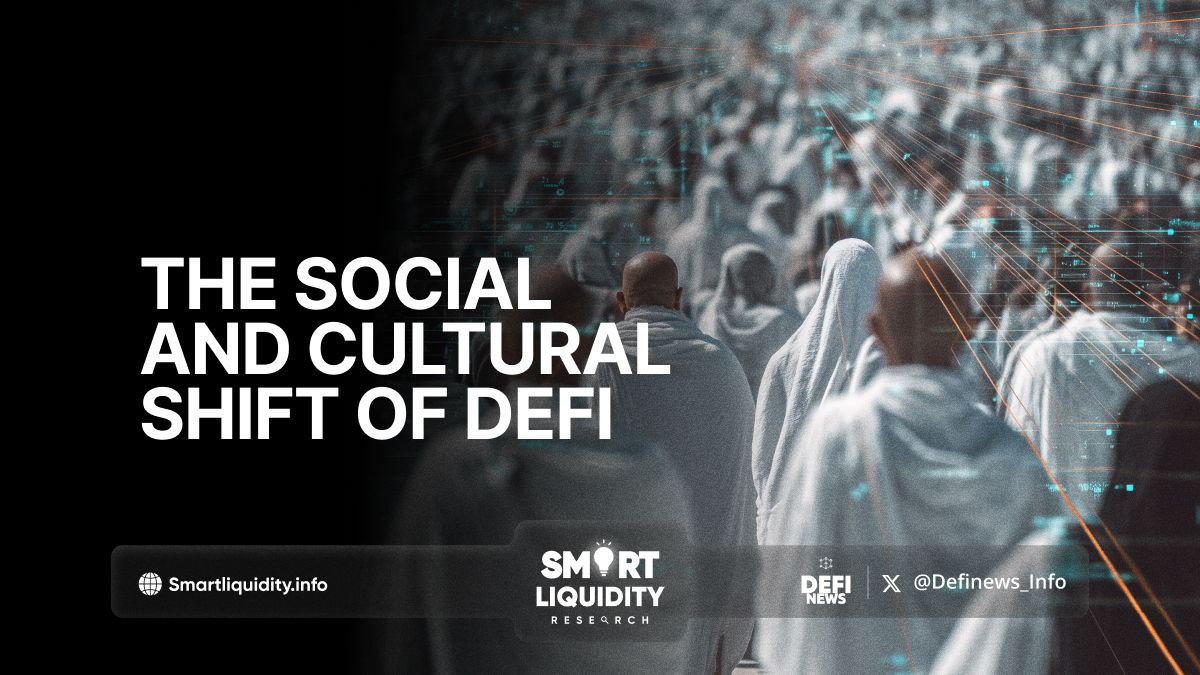The Social and Cultural Shift of DeFi


The Social and Cultural Shift of DeFi! Decentralized Finance (DeFi) is often praised for its disruptive technology—smart contracts, permissionless lending, and yield farming—but its true impact extends far beyond financial infrastructure. DeFi is catalyzing a global shift in how communities think about money, governance, and culture itself.
What began as a technical experiment on the Ethereum blockchain has evolved into a broader social movement, driven by ideals of autonomy, transparency, and collective ownership.
Community Ownership: DAOs and the Rise of Social Capital
One of the most visible cultural transformations within DeFi is the emergence of DAOs—Decentralized Autonomous Organizations. These blockchain-governed communities operate without central leadership, often allocating decision-making power to token holders. But many DAOs aren’t just about governance—they’re also about identity, belonging, and shared purpose.
Projects like Friends With Benefits (FWB) exemplify this fusion of finance and social culture. FWB is a token-gated community where members contribute to creative, social, and cultural initiatives. It’s part investment club, part creative collective. In communities like these, social capital is tokenized and pooled, where the line between economic value and cultural value is increasingly blurred. Ownership and participation become synonymous.
Challenging Financial Norms: From Centralization to Self-Sovereignty
DeFi represents a direct challenge to the centralized, opaque financial systems that dominate global economies. By eliminating intermediaries such as banks and brokerages, DeFi protocols enable individuals to transact, borrow, lend, and invest on their terms. This shift introduces a fundamentally new ethos—self-sovereignty, where users control their assets, data, and decisions.
Transparency is another core tenet. In DeFi, most operations are open-source and executed on-chain, which enables anyone to audit financial flows. This level of accountability is rare in traditional finance, where centralized institutions often operate behind closed doors. DeFi’s structure invites a rethinking of who holds power in financial ecosystems—and how that power is distributed.
Education and Adoption: Culture Built on Collaboration
Despite the technical complexity of DeFi, its growth is largely grassroots. Platforms like Discord, X (Twitter), Telegram, and Farcaster serve as digital town squares where communities collaborate, share knowledge, and welcome newcomers. These online networks play a critical role in education, not just technical tutorials, but also ideological framing around decentralization and autonomy.
Memes, lore, and viral content are part of the DeFi cultural toolkit. This approach lowers the barrier to entry, using humor and storytelling to engage wider audiences. Importantly, learning in DeFi is participatory. Instead of relying on formal institutions, users learn through immersion by joining DAOs, participating in governance, and experimenting with protocols. It’s a form of peer-to-peer financial literacy powered by shared values.
Conclusion: DeFi as a Cultural Reboot
DeFi is more than an upgrade to financial systems—it’s a cultural reboot. It reframes wealth not just as capital, but as collaboration, coordination, and community participation. The rise of DAOs, the emphasis on self-sovereignty, and the grassroots educational wave reflect deeper social trends toward decentralization in every sense of the word.
As DeFi matures, its cultural layers will likely grow just as complex as its technical ones. For those watching closely, it’s not just about where the money flows—it’s about how communities are rebuilt in the process.




